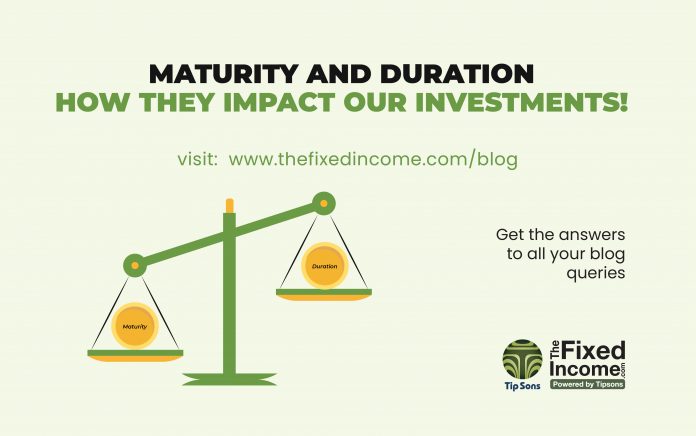Risk and return drive our investment goals. Of course, greed and fear are the psychological factors that influence us, but we will not visit them right now. But we see the features of a bond that impacts risk and returns.
Maturity is a point in time when the bond actually expires or ceases to exist. Any juice that can be extracted from a bond either as capital gains or a coupon (interest) has to be taken during its lifetime.
During the life of a bond, it strives to live by the characteristics that have been built into its DNA. These would include payment of periodic interest or a cumulative repayment of interest and principal in a single bullet at the end of its life. A bond that pays regular interest is called a coupon bond (which is a normal, vanilla bond), while those that repay in a single installment combining interest and principal at its maturity is a zero-coupon bond (which is like a cumulative interest product).
It is in analyzing the cash flows of a bond that we can visualize some of the risks in a bond. In a zero-coupon bond (ZCB) there is just a single flow as outgo at the time of investment and another single repayment that encompasses the return of principal as well as entire interest for the lifetime of the bond. Surveys of non-finance people asked for their instinctive preference for a normal coupon bond to a ZCB providing precisely the same returns have shown that 60 to 70% do not prefer a ZCB, and would rather have a normal coupon paying bond, even when they did not require the interest payout.
The reason is presumably the lower loss in the event of the bond’s default. This is not just a psychological aversion but is connected to a measurable difference in the amount of money at risk in the event of a bond default. The link between these is duration or Macauley Duration.
If we take the example of a bond of Rs. 100, maturing in 10 years, paying annual interest of 10% a year its cash flows could be represented as below. The initial investment is an outward cashflow followed by regular receipts of interest, with the final amount being interest for the last year and the principal, paid together.
-100 10 10 10 10 10 10 10 10 110
The zero-coupon bond, having just a single payment will pay the entire sum at the end.
Here the coupon bond, by providing constant payments as interest actually returns the money due before 10 years, on a weighted basis. The weighted average time taken to get the money back in a bond in our example of 10% interest in a 10 years maturity paper is about 7 years. It is actually all of 10 years in the zero-coupon bond as there are no interim cash flows. The risk default increases with time. This gives the instinctive preference for a coupon bond over a cumulative, or zero-coupon investment.






















